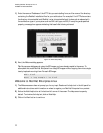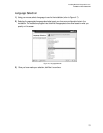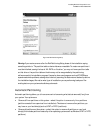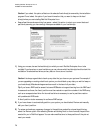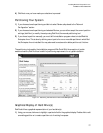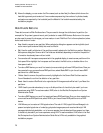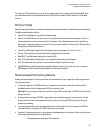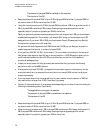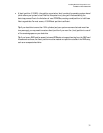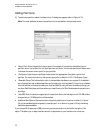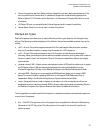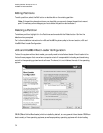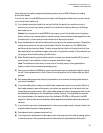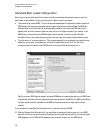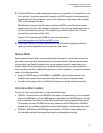Installing Red Hat* Enterprise Linux 4*
Intel® Server Board S5000PAL
30
- The amount of physical RAM is installed on the machine.
- The version of the OS.
• Swap should equal 2x physical RAM for up to 2 GB of physical RAM, and then 1x physical RAM for
any amount above 2 GB, but never less than 32 MB.
• Using this formula, a system with 2 GB of physical RAM would have 4 GB of swap, while one with 3
GB of physical RAM would have 5 GB of swap. Creating a large swap space partition can be
especially helpful if you plan to upgrade your RAM at a later time.
Tip: If your partitioning scheme requires a swap partition that is larger than 2 GB, you should create
an additional swap partition. For example, if you need 4 GB of swap, you should create two 2 GB
swap partitions. If you have 4 GB of RAM, you should create three 2 GB swap partitions. Red Hat
Enterprise Linux supports up to 32 swap files.
For systems with really large amounts of RAM (more than 32 GB) you can likely get away with a
smaller swap partition (around 1x, or less, of physical RAM).
• A root partition (500 MB -5.0 GB) — this is where "/" (the root directory) is located. In this setup, all
files (except those stored in /boot/efi) are on the root partition. A 500 MB partition allows you to
install a minimal installation, while a 5.0 GB root partition lets you perform a full installation,
choosing all package groups.
• Unless you have a reason for doing otherwise, we recommend that you create the following
partitions for x86 and Intel® 64 systems:
• A swap partition (at least 256 MB) — swap partitions are used to support virtual memory. In other
words, data is written to a swap partition when there is not enough RAM to store the data your
system is processing.
• If you are unsure about what size swap partition to create, make it twice the amount of RAM on
your machine (but no larger than 2 GB). It must be of type swap.
• Creation of the proper amount of swap space varies depending on a number of factors including the
following (in descending order of importance):
- The applications running on the machine.
- The amount of physical RAM is installed on the machine.
- The version of the OS.
• Swap should equal 2x physical RAM for up to 2 GB of physical RAM, and then 1x physical RAM for
any amount above 2 GB, but never less than 32 MB.
• Using this formula, a system with 2 GB of physical RAM would have 4 GB of swap, while one with 3
GB of physical RAM would have 5 GB of swap. Creating a large swap space partition can be
especially helpful if you plan to upgrade your RAM at a later time.



